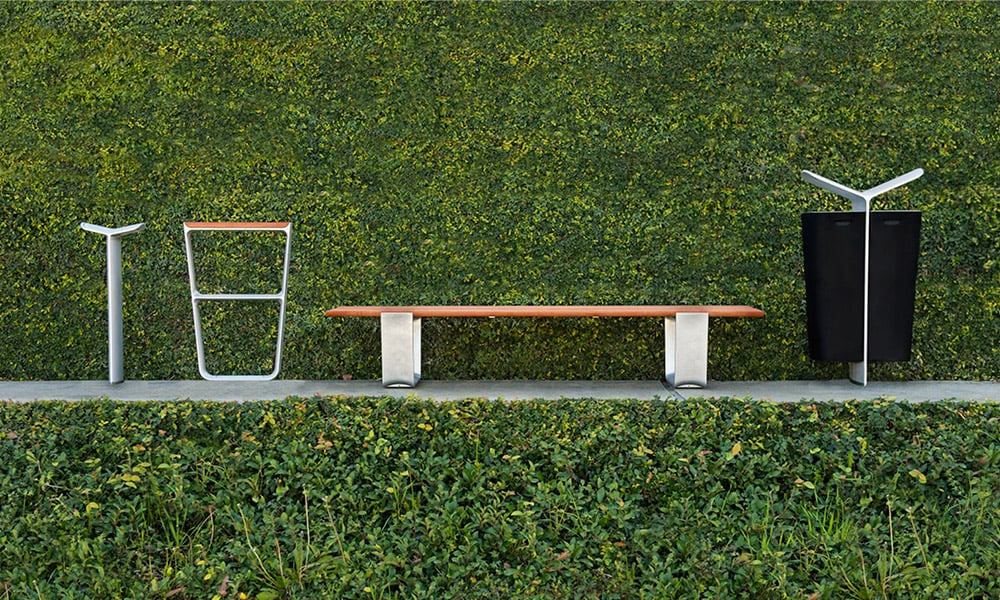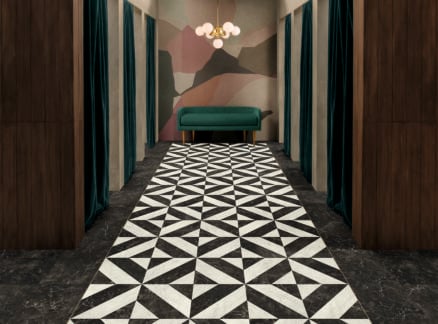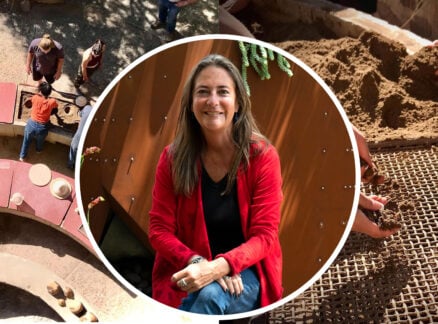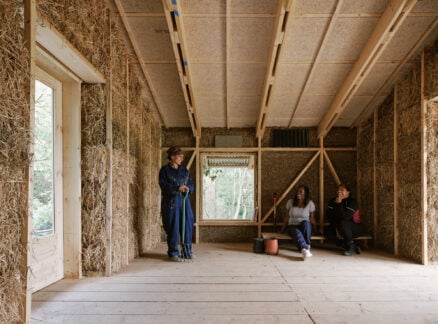
July 20, 2015
Opinion: Designing Outdoor Public Spaces (& Furniture) is Vital to Cities
The vice president of design and marketing at Landscape Forms calls on the outdoor-furniture industry to build the collaborations that will shape the metropolitan experiences of tomorrow.

The MultipliCITY collection designed by Yves Behar and fuseproject
Courtesy Landscape Forms
All of us treasure our time in outdoor spaces. So why do we devote so little of our attention to their design?
As a designer in the site-furniture industry, I am always curious about the value people place on the outdoors. I like to ask people I meet to describe a great city like New York, Chicago, or Paris and what they most remember about being there. Or I ask them, if they won $25,000 to spend on a dream vacation, where they would go and what they would do. Their fond memories of a celebrated city or an escape into the wild often have little in common, except for one thing: Their most memorable and meaningful experiences almost always revolve around the outdoors.
We have studies showing that people tend to be healthier and happier, and can enjoy longer lives, in areas where they have access to nature, including green urban spaces. Outdoor spaces are some of the least expensive to create and can pay some of the highest returns on investment—in terms of community life, health and wellness, and the generation of economic activity in surrounding areas. As more people—from young professionals to retirees—move back into cities, green public spaces and vibrant streetscapes are often cited as key factors for attracting residents and businesses.
Despite this, we do not give outdoor spaces the same value and financial support that we give to buildings and interiors. We calculate the square-foot dollar value of buildings and interiors but don’t do the same for a square foot outdoors. We have not made a strong business case for designed outdoor spaces—we can and should be making this case. I also believe that design and innovation in public and privately owned outdoor space is lagging—and the first step to address that challenge is to better leverage the skills and talents of landscape architects, the professionals best prepared to design them.
This is a time in human history when landscape architecture has something really important to say. We should listen. Landscape architects practice a discipline rooted in holistic thinking. They understand the natural environment, the built environment, and the interface between them. And they are ideally prepared to take leadership in shaping outdoor spaces and framing public awareness about them.
Recent high-profile projects such as the High Line and Millennium Park have achieved placemaking of the highest order, and the star landscape architects responsible for them have captured public attention. But there is a whole legion of talented, inspired landscape architects out there who should also be at the center of envisioning and designing outdoor space.

Central Park Conservancy Recycling System designed by Landor Associates
This is also a time when industry can play a constructive role. Those of us who provide the site elements that help shape and activate these spaces need to do our part, and I’m excited about taking on that challenge, researching methods to make the case for the return on investment for well-designed outdoor spaces measured in terms of community, identity, well-being, environment, and dollars spent. I am focused on driving innovation with new types of scalable solutions that go beyond the standard litter bin, bike rack, and bench, to help people enjoy great outdoor experiences. The outdoors starts only a half-inch outside the door, so we need new ideas for spaces adjacent to buildings. We also need to integrate technology in public spaces, but in ways that respect the special qualities of the environment.
I am excited by the work and believe that, in collaboration with landscape architects and other design professionals, all of us in the site-furniture industry can elevate awareness and promote greater investment in outdoor spaces that create memory and meaning. We can make a real difference in the urban landscape that is our future.
Kirt Martin is the vice president of design and marketing at Landscape Forms, leading the company’s creative teams for product development, marketing, and marketing communications. Martin is an award-winning industrial designer, and previously directed design activities at Turnstone, a division of Steelcase.





